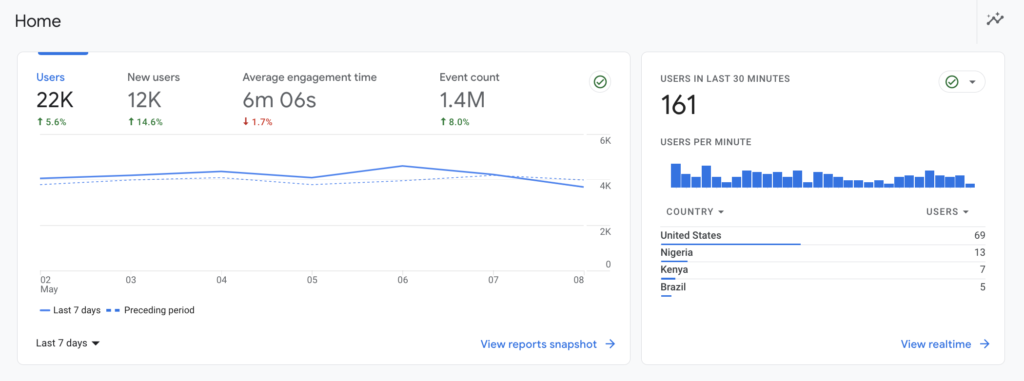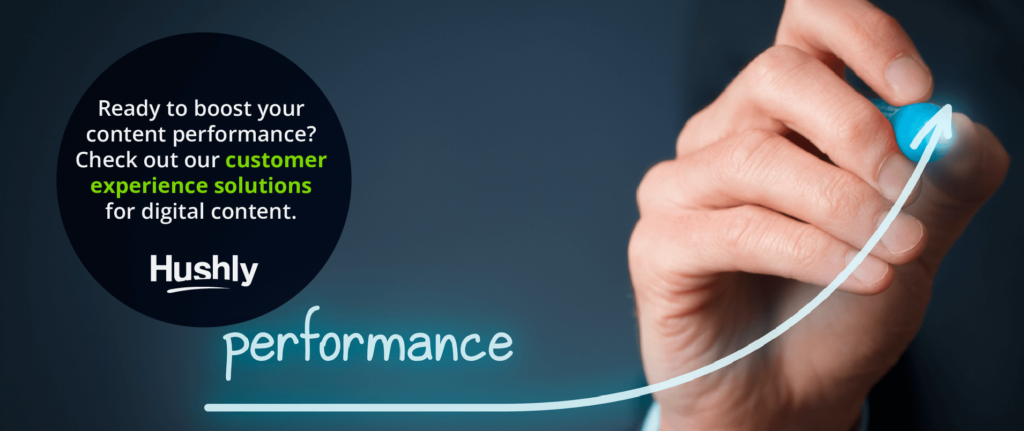Filters
Content Type
Topic
Defining Content Performance & Ways to Measure It
When you invest hours into creating online content, you want to ensure you’re seeing quality results. How can you guarantee your content is performing how you designed it? And how can you measure whether the content contributes to your marketing goals?
Learn why tracking content performance helps you succeed in marketing and the best content marketing metrics to track.

What Is Content Performance?
Content performance describes the content’s results and how those results compare to the overall marketing goals. You want your content performance to help you reach your marketing goals to ensure the results are worth the investment.
What content do you measure performance for?
Content can include any digital material a company shares online, including:
- Web pages and landing pages
- Blog posts
- Videos
- Images
- Social media posts
The metrics you use depend on the type of content you share. Let’s explore how to measure content performance on your website, like blog posts and web pages.
Why Does Content Performance Matter?
Content performance analysis ensures content contributes to marketing goals and has a high return on investment (ROI). It also helps you also measure your company’s growth.
When you begin a content marketing strategy, you should establish goals such as building brand awareness, generating leads, and converting leads into buyers. To maximize your content’s performance, you can then compare its performance metrics to your marketing goals. This is what marketers call content intelligence, and it informs your content strategies to keep them on track with your marketing goals.
How to Measure Content Marketing Performance
There are dozens of ways to measure content performance. However, the best method uses several metrics together. Each metric on its own only gives a glimpse at how visitors are interacting with your content. But, when you combine multiple metrics, you see the path buyers take and learn the most effective methods for converting buyers or where the content falls short so you can optimize its performance.
For example, content traffic tells marketers how many people land on the page, which is crucial, but it doesn’t tell marketers whether those visitors stay on the page. Looking at the bounce rate alongside traffic gives a complete picture. When you add on leads generated, you can also see how many people read the full content and responded to the call to action.
7 Metrics to Measure Content Performance
Track these seven metrics for a comprehensive view of your online content’s performance.
1. Website Traffic
Your web traffic is a foundational metric that gives you a generalized idea of how many people find your content. Tools like Google Analytics give you additional information about your web traffic on their content performance report, including:
- How many visitors are unique
- How many visitors are returning
- Where do the visitors come from (country or region)
- What browser the traffic uses
Establish traffic benchmarks and track this metric to ensure people are finding your content. If you have low traffic, consider sharing the content on social media or third-party sites, sponsoring it in searches, and optimizing pages for search engines.

Image from Google
2. Average Time on the Page
Traffic alone isn’t enough for a complete view of your visitors. That’s why you should also look at the average time spent on the page.
This metric tells you how engaging the content is. If people read through a 2,000-word blog post in five minutes, you know they’re skimming the content, and you may need to make it more engaging or shorten it.
Depending on what analytic tool you use, you may also be able to see scroll depth. This metric tells you how far down visitors went before leaving the page. If multiple readers leave the page at the same scroll depth, it may be time to rewrite and redesign that area to encourage visitors to keep scrolling.
3. Bounce Rate
Bounce rate compares the total traffic to those who leave after viewing a single page. This metric tells you what percentage of your total visitors are staying on your website and interacting with your content.
You should strive for an ideal bounce rate between 30 and 50% but remember that each industry varies. If you hit an ideal bounce rate, your content actively engages visitors. However, if you have a high bounce rate, consider optimizing your content to be more engaging or try targeting niche traffic so you bring more relevant visitors to your content who will stay on the page.
4. Traffic Engagement
Engagement metrics tell you how relevant your content is. Relevant content will more likely resonate with B2B readers and convert them into buyers.
Engagement metrics that demonstrate content effectiveness include:
- Likes
- Shares
- Comments
- Mentions
5. Referring Pages
Where did your traffic come from?
Part of content strategy is investing resources into content discovery. You want to ensure your niche audience finds you. So, tracking referring pages in your content measurement to find the most effective methods for attracting B2B buyers helps marketers know where to focus the most time and resources.
For example, content bringing in a large amount of organic search traffic shows the SEO strategy is effective. But, if marketers don’t see much traffic from PPC ads, they should either optimize their ads more or focus more on organic traffic over sponsored ads.
6. Pages Visited
Where do visitors go after reading your content?
This metric helps marketers understand the impression content has on visitors. If most visitors go to the pricing page after reading blog posts, marketers know the blog posts work very well as conversion copy.
Knowing where visitors go after reading content also helps marketers optimize those next pages to pick up where the original content left off. That way, B2B buyers continue moving through the sales funnel.
7. Conversion Rate
Every content should have a call to action. The call to action is what follow-up action a reader should take. These actions ensure visitors continue to interact with your content and brand. When visitors take action, you count that action toward your conversion rate.
The most effective call to action captures lead information through lead generation forms. That way, interested visitors can receive nurturing emails that move them through the sales funnel and ensure the lead doesn’t forget about your brand.
For example, if your goal is to generate leads, you may calculate your conversion rate by how many leads fill out the form at the end of your content.
Content won’t usually end in a direct sale (though there are exceptions, especially for conversion copy like pricing pages). Instead, most content addresses pain points for middle-of-the-funnel leads. Then, once leads express continued interest, the sales team converts them into B2B buyers, resulting in an indirect sale that began with the content.
Boost Your Content Performance
Is your content not meeting your performance benchmarks?
Hushly can help.
Our customer experience solutions customize each page to your B2B visitors. You can increase the number of visitors who stay on your site and interact with your content through personalized ads, eye-catching calls to action, and engaging text.
Hushly’s solutions are simple to integrate while yielding powerful results. That way, you can spend more time nurturing your B2B leads and less time trying to capture those leads.
Ready to boost your content performance? Check out our customer experience solutions for digital content.
The post Defining Content Performance & Ways to Measure It appeared first on Hushly.



